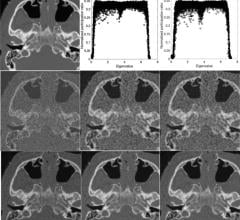As the “guns” used to shoot radioactive seeds into or around a tumor for brachytherapy, afterloading devices may seem like a rather simple technology.
But that’s a misnomer. Manufacturers of these high-tech devices have made clear strides over the years in improving the design and function of the technology – including the guns and the cancer-killing bullets themselves.
Outpatient Care Technology wanted to explore what future afterloading devices might look like and operate so it reached out to key executives at some of the leading manufacturers for their insights and outlook.
On noteworthy improvements in after-loading devices…
Tim Clark, product manager, Brachytherapy Business, Varian Medical Systems
Since the initial introduction of [high-dose-rate brachytherapy (HDR)] the sources they use have continued to decrease in size. Currently sources for HDR units can be as small as 0.6mm in diameter. This means the applicators and catheters that are placed within the patient can become correspondingly smaller, meaning less trauma for the patient and easier placement. Applicator designs have also improved significantly over the years. Modern applicators may be designed from high-tech materials such as titanium. This material is not only lightweight and robust, it is also compatible with CT and MR imaging modalities.
Jeroen Cammeraat, Chief Operating Officer, Nucletron
The brachytherapy treatment solution must be tailored to fit specific clinical needs, enabling highly conformal treatment of cancers, including gynecologic, breast, prostate, skin and endorectal. Prior to developing technological solutions, it is important to understand the needs of our customers to maximize patient outcomes and quality of life.
The afterloader solution is one tool in the decision support system ultimately designed to improve patient outcome and quality of life. It must offer optimal dose conformity to increase the dose to target volume while eliminating toxicity to healthy tissue.
From a technological standpoint, Nucletron has identified and addressed essential areas of improvement in afterloading solutions in recent years that directly influence our new product development process. Our goal is to provide unparalleled versatility in brachytherapy while enhancing cost-effectiveness, and integration with adjunctive therapies.
To meet these needs, afterloader solutions must be scalable – that is, allow clinicians, physicists and dosimetrists to easily upgrade to a higher number of channels with minimal downtime or additional staff training. An investment in a six-channel use option that meets current clinical requirements – such as in low-channel skin, breast or gynecologic cases, for example – may be later upgraded to up to 18 or 30 channels as the need arises for more complex cases, such as prostate, multichannel breast or sarcoma. This level of scalability means that cancer treatment centers can purchase equipment that not only meets current demand, but immediately responds to the changing needs of their patients, all while our customer’s investment is future-proof and backward compatible.
The upgrade procedure should be flexible. The objective is to optimize resources, such as financial and personnel. The afterloader should be designed to allow channel upgrades at the software level, not at the hardware level or within the unit itself. In fact, it should be easy to upgrade during regularly scheduled source exchanges.
Finally, a single afterloader unit should be capable of performing either HDR or [pulsed-dose-rate] treatments, depending on the source, all in the same afterloader system.
On making after-loading devices even more user-friendly and effective…
CLARK: When treating brachytherapy patients timing is key. Often patients have uncomfortable applicators in place and want the treatment to be completed as soon as possible. This in turn puts pressure on the users to work in a timely manner. But as with any radiation treatment safety is paramount and there is no room for error. Users must therefore be given clear and simple user interfaces designed to the specific clinical needs and environment but most of all designed with safety as the No. 1 priority.
CAMMERAAT: By moving from two-dimensional to three-dimensional imaging, treatment may better conform to the target area while preserving surrounding healthy tissue. Therefore, the afterloading device should thoroughly support clinical development in the progression from 2D to 3D, incorporating multimodality imaging and image-fusion to support reproducible results. Nucletron is a proponent of creating an infrastructure within academic institutions that supports more predictable patient outcomes so that we can continue to move brachytherapy decision-making from an art to a science. We also must support the end-user in the current competitive environment by optimizing workflow and maximizing return on investment (ROI).
With the end-user and patient in mind, Nucletron has also identified a distinct need to eliminate the time required to reconnect the transfer tubes when treating large volume implants. This dramatically shortens patient wait time during setup. It is also important to maximize the end-user’s time and previous investments in equipment and training.
One way to do that is to enable afterloading devices to connect to existing HDR and PDR brachytherapy applicators and consumables as well as other DICOM-compliant technology. We have also determined that the most effective and user-friendly devices must include corresponding simulation software, included in Nucletron’s microSelectron Digital brachytherapy solutions, that allow clinicians, physicists and dosimetrists to train on the system in a nonclinical setting, thereby shortening the learning curve and optimizing patient throughput.
Feature | October 15, 2007 | Rick Dana Barlow
Radioactive seeds are being designed, deployed more deftly.
© Copyright Wainscot Media. All Rights Reserved.
Subscribe Now


 December 23, 2025
December 23, 2025 









